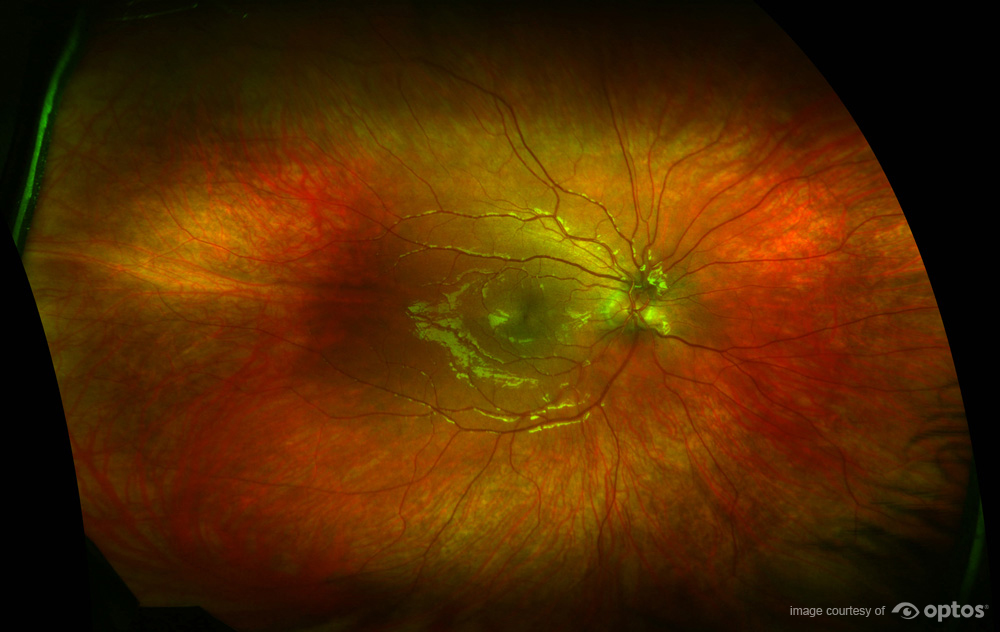The Optomap exam is a fast, painless and comfortable method to scan and image your retina (the internal structure of your eye). Nothing touches your eye at any time, and eye drops are not used to take these images. It is the preferred method for retinal examination for young and elderly patients. To have the exam, you simply look into the device one eye at a time (like looking through a keyhole) and you will see a flash of light to let you know the image of your retina has been taken. The capture takes less than a second. The images are then available immediately for your review with Dr. Chettiparampil. You see exactly what your retina looks like – even in a 3D animation. This ultra wide field retinal image is a unique technology that captures more than 80% of your retina in one panoramic image while traditional imaging methods typically only show 15% of your retina at one time.
Benefits of an Optomap image:
- Early protection from vision impairment or blindness due to eye diseases.
- Early detection of life-threatening diseases like cancer, stroke and cardiovascular disease.
- The unique optomap ultra-widefield view helps your eye care practitioner detect early signs of retinal disease more effectively and efficiently than with traditional eye exams

Frequently Asked Questions about this technology
Why is a retinal exam so important? Some of the first signs of diseases such as stroke, diabetes and even some cancers can be seen in your retina, often before you have other symptoms. An Optomap makes it easier to see them.
Why is a retinal exam so important? Some of the first signs of diseases such as stroke, diabetes and even some cancers can be seen in your retina, often before you have other symptoms. An optomap makes it easier to see them.
What is an optomap? The optomap is a panoramic digital image of the retina produced by Optos scanning laser technology. It is the only technology that can show a wide 82% view of your retina at one time.
Is an optomap safe for children? Yes. In fact, many vision problems begin in early childhood, so it’s important for children to receive quality routine eye care.
Does it hurt? No. It is completely comfortable and the scan takes less than a second.
How will optomap benefit me? The optomap’s wide view of the retina helps Dr. Chettiparampil detect problems more quickly and easily. Unlike traditional retinal exams, the optomap image can be saved for future comparisons.
How often should I have an optomap? Dr. Chettiparampil recommends her patients to be imaged once a year, to see progression and changes from the baseline images taken on your first visit.
Are there side effects? Optomap images are created by non-invasive, low-intensity scanning lasers. No adverse effects have been reported in over 39 million sessions.



